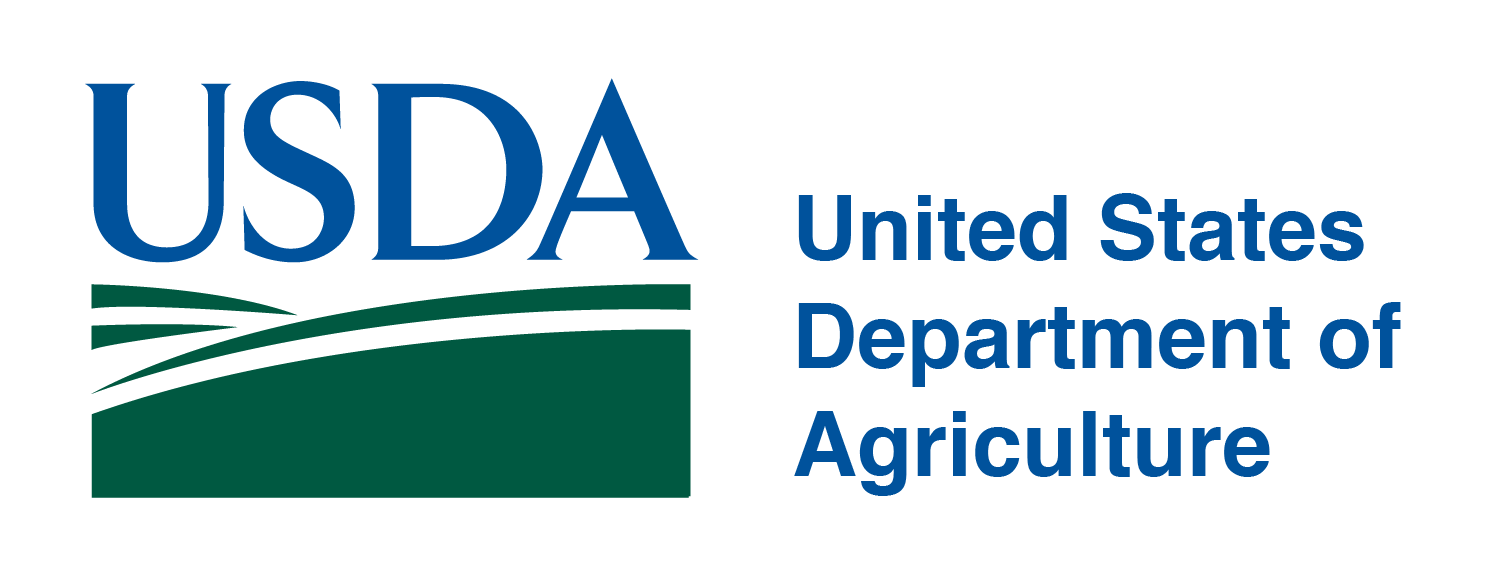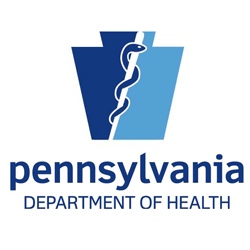- CMS: Medicare Program; Implementation of Prior Authorization for Select Services for the Wasteful and Inappropriate Services Reduction (WISeR) Model
- Public Inspection: CMS: Medicare Program: Implementation of Prior Authorization for Select Services for the Wasteful and Inappropriate Services Reduction Model
- CMS: Secretarial Comments on the CBE's (Battelle Memorial Institute) 2024 Activities: Report to Congress and the Secretary of the Department of Health and Human Services
- HHS: Patient Protection and Affordable Care Act: Marketplace Integrity and Affordability
- HRSA Announces Action to Lower Out-of-Pocket Costs for Life-Saving Medications at Health Centers Nationwide
- Public Inspection: HHS: Patient Protection and Affordable Care Act: Marketplace Integrity and Affordability
- Increased Risk of Cyber Threats Against Healthcare and Public Health Sector
- Eight Hospitals Selected for First Cohort of Rural Hospital Stabilization Program
- Announcing the 2030 Census Disclosure Avoidance Research Program
- CMS: Medicare Program; Hospital Inpatient Prospective Payment Systems for Acute Care Hospitals and the Long-Term Care Hospital Prospective Payment System and Policy Changes and Fiscal Year 2026 Rates; Requirements for Quality Programs; and Other Policy Changes; Correction
- CMS: Medicare Program; Hospital Inpatient Prospective Payment Systems for Acute Care Hospitals and the Long-Term Care Hospital Prospective Payment System and Policy Changes and Fiscal Year 2026 Rates; Requirements for Quality Programs; and Other Policy Changes; Correction
- CMS: Medicare and Medicaid Programs; Contract Year 2026 Policy and Technical Changes to the Medicare Advantage Program, Medicare Prescription Drug Benefit Program, Medicare Cost Plan Program, and Programs of All-Inclusive Care for the Elderly; Correction
- CMS: Medicare and Medicaid Programs; Contract Year 2026 Policy and Technical Changes to the Medicare Advantage Program, Medicare Prescription Drug Benefit Program, Medicare Cost Plan Program, and Programs of All-Inclusive Care for the Elderly; Correction
- CMS: Medicare Program; Prospective Payment System and Consolidated Billing for Skilled Nursing Facilities; Updates to the Quality Reporting Program for Federal Fiscal Year 2026
- CMS: Medicare Program; FY 2026 Hospice Wage Index and Payment Rate Update and Hospice Quality Reporting Program Requirements
ARC Funds Projects to Advance Appalachia

At the Appalachian Regional Commission’s 2024 annual conference, Advancing Appalachia, Federal Co-Chair Gayle Manchin announced the latest round of investments in multi-state projects through our Appalachian Regional Initiative for Stronger Economies (ARISE): $16.9M to five projects in 10 states.
These projects will benefit at least 270 counties and bring together 60 regional partners — including one of Appalachia’s federally recognized Tribal Communities, the Seneca Nation of Indians. Check out each new investment below! 🌄
$8M to Save the Children Federation to grow the childcare and early education workforce 🏫
$4.5M to the Beneficial Electrification League to modernize electricty infrastructure 💡
$3.9M to the Appalachian Investors Alliance to establish funds for small businesses 🏦
$500K to Carnegie Mellon University to develop job skills matching and career support 💼
$72,219 to the Pennsylvania Environmental Council to boost outdoor tourism 🏞️
USDA Designates Two Pennsylvania Counties as Natural Disaster Areas

On September 9, 2024, Secretary of Agriculture Tom Vilsack notified the Pennsylvania Governor Josh Shapiro of two disaster areas.
As Sec. Vilsack noted, in accordance with 7 CFR 759.5(a), two Pennsylvania counties are designated as primary natural disaster areas due to a recent drought. According to the U.S. Drought Monitor, these counties suffered from a drought intensity value during the growing season of 1) D2 Drought-Severe for 8 or more consecutive weeks or 2) D3 Drought-Extreme or D4 Drought-Exceptional.
A Secretarial disaster designation makes farm operators in primary counties and those counties contiguous to such primary counties eligible to be considered for Farm Service Agency (FSA) emergency loan assistance, provided eligibility requirements are met. Farmers in eligible counties have 8 months from the date of a Secretarial disaster declaration to apply for emergency loans. FSA considers each emergency loan application on its own merits, taking into account the extent of production losses on the farm and the security and repayment ability of the operator.
The affected counties are:
- Fayette
- Westmoreland
Contiguous Counties:
- Allegheny
- Butler
- Greene
- Somerset
- Armstrong
- Cambria
- Indiana
- Washington
Local FSA offices can provide affected farmers with further information.
CMS Releases Updates on Medicaid and CHIP Renewals

This Centers for Medicare & Medicaid Services (CMS) listserv includes the following Medicaid/Children’s Health Insurance Program (CHIP) renewal information:
- Recent CMS Releases
- Additional Updated Outreach and Educational Resources for Partners
- Free CMS Printed Product Ordering
RECENT CMS RELEASES
In August 2024, CMS released an informational bulletin and slide deck to provide additional guidance to states on their obligation to come into compliance with federal regulations on timely processing of Medicaid and CHIP eligibility renewals, as well as provide an update to the timeline in which states must complete unwinding-related renewals. To ensure that individuals who are eligible for Medicaid or CHIP retain coverage, and to assist states in their continued transition to regular renewal processing, CMS is providing states additional time to complete eligibility renewals, address persistent backlogs in processing redeterminations, and ensure that states achieve compliance with federal renewal timeliness requirements by December 2025.
- Informational Bulletin: Guidelines for Achieving Compliance with Medicaid and CHIP Eligibility Renewal Timeliness Requirements Following the Medicaid and CHIP Unwinding Period
- Slide Deck: Temporary Strategies and Ongoing Practices to Support Timely Medicaid and CHIP Renewal Initiation and Processing
ADDITIONAL UPDATED OUTREACH AND EDUCATIONAL RESOURCES FOR PARTNERS
This summer, CMS updated several resources on the Medicaid and CHIP Renewals Outreach and Educational Resources to include evergreen language that partners can use to share information about regular Medicaid and CHIP renewals. Additional resources have recently been updated on the webpage (see list below). The webpage can be accessed using the new shorthand link at Medicaid.gov/renewals-outreach-education. We encourage partners to explore the refreshed webpage and resources, and we will continue to highlight additional updates to the webpage and resources as they become available.
Spanish Translation Now Available
- Drop in Article for People who Lost Medicaid or CHIP (English and Spanish): Use this article for listservs, newsletters, and other outreach resources to educate people about what to do if they have lost Medicaid or CHIP.
Refreshed to Include Information About Regular Medicaid and CHIP Renewals
Reaching Out to Asian American, Native Hawaiian, and Pacific Islander People about Medicaid and CHIP Renewals (English): Use this one-page handout to help reach Asian American, Native Hawaiian, and Pacific Islander people and share information about Medicaid and CHIP renewals.
Reaching Out to Black Americans about Medicaid and CHIP Renewals (English): Use this one-page handout to help reach Black Americans and share information about Medicaid and CHIP renewals.
Reaching Out to Hispanic or Latino People about Medicaid and CHIP Renewals (Englishand Spanish): Use this one-page handout to help reach Hispanic or Latino people and share information about Medicaid and CHIP renewals.
Reaching Out to People with Disabilities about Medicaid and CHIP Renewals (English): Use this one-page handout to help reach people with disabilities and share information about Medicaid and CHIP renewals.
Reaching Out to People Who Live in Rural Areas about Medicaid and CHIP Renewals(English): Use this one-page handout to help reach people who live in rural areas and share information about Medicaid and CHIP renewals.
Reaching Out to American Indian and Alaska Native People about Medicaid and CHIP Renewals (English): Use this one-page handout to help reach American Indian and Alaska Native people and share information about Medicaid and CHIP renewals.
FREE CMS PRINTED PRODUCT ORDERING
Select CMS Medicaid and CHIP renewals materials are available to order for free through the CMS Product Ordering website. To order free printed materials, visit the CMS Product Ordering website. If you do not have an account, you will need to request an account on the login page. Once you log into your account, you can enter the term “Unwinding” in the search bar to view the materials that are available for order.
Materials on enrolling in health coverage through the Health Insurance Marketplace are also available to order for free through the CMS Product Ordering website. Once you log into your account, you can select the tab titled “Marketplace” to view materials related to Marketplace enrollment, Coverage to Care, and more that are available to order.
New Report Released: Financial Performance of Rural and Urban Hospitals in Medicare Shared Savings Program

Financial Performance of Rural and Urban Hospitals in the Medicare Shared Savings Program
Huang Huang, PhD; Xi Zhu, PhD; Fred Ullrich, BA; A. Clinton MacKinney, MD, MS; Keith Mueller, PhD
This brief presents financial performance trends of hospitals who participated in Medicare’s Shared Savings Program (SSP) from 2011 to 2018. Trends in six financial outcomes are compared between SSP and non-SSP hospitals over time and between rural and urban hospitals.
Key Findings:
- Hospitals participating in the SSP had, on average, higher outpatient revenue, higher inpatient revenue, higher net patient revenue, higher operating margins, lower inpatient revenue share, and higher Medicare revenue share at the baseline year 2011 and throughout the study period.
- Compared to their respective non-SSP counterparts, rural SSP hospitals experienced a higher percentage increase in outpatient revenue than urban SSP hospitals.
- Rural hospitals participating in SSP experienced higher increases in inpatient revenue and net patient revenue than rural hospitals not participating in SSP. In contrast, urban hospitals participating in SSP experienced lower increases in these measures than urban hospitals not participating in SSP.
Access the report here.
Additional Report:
- Impact of Medicare Shared Savings Program Participation on Hospital Financial Performance: An Event-Study Analysis – (2022) Health Services Research, 58(1); 116-127.
Contact Information:
Keith J. Mueller, PhD; keith-mueller@uiowa.edu
Director, RUPRI Center for Rural Health Policy Analysis
University of Iowa College of Public Health
Office: 1.319.384.3832
2023 Behavioral Risk Factor Surveillance System Public Data Now Available

The 2023 Behavioral Risk Factor Surveillance System (BRFSS) data set is now publicly available. The BRFSS reaches participants on both landline and cellular telephones, collecting information on health risk behaviors, clinical preventive health practices, and health care access. The survey includes a representative sample of noninstitutionalized adults aged 18 years or older in each survey area. Understanding these data can provide important public-health insights into disparity, access, and reach.
Pennsylvania Launches New Oral Health Program Website

The Pennsylvania Department of Health has updated their website. Check out the new look for the Oral Health Program webpage and resources.
USDA Selects Pennsylvania Electric Cooperative for New ERA Funding

U.S. Department of Agriculture (USDA) State Director for Rural Development-Pennsylvania Bob Morgan announced that Allegheny Electric Cooperative Inc., would receive USDA funding through the Empowering Rural America (New Era) program. Together, New ERA and other investments in rural clean energy in the President’s Inflation Reduction Act make up the largest investment in rural electrification since President Franklin Delano Roosevelt signed the Rural Electrification Act into law in 1936 as part of the New Deal. This announcement includes more than $7.3 billion in financing for 16 rural electric cooperatives in rural communities across the country.
“Rural communities are driving positive change in America,” Morgan said. “Through the New ERA program, rural communities are leading the way toward a greener and more prosperous future, ensuring a better quality of life for families and a healthier planet for all.”
The New ERA investment will help Allegheny Electric Cooperative add significant carbon-free resources to its generation portfolio. Their innovative project will help serve energy needs in rural portions of Pennsylvania and New Jersey, while reducing the carbon footprint of Allegheny and its 14-member electric distribution cooperatives.
New ERA funding will allow Allegheny to meet over 80 percent of its power requirements from carbon-free resources by 2026 and reduce pollution and carbon dioxide emissions by nearly 100,000 tons annually. This proposal will reduce greenhouse gas pollution at a level equivalent of removing 22,000 gasoline-powered cars from the road annually. The opportunity to invest in clean energy resources makes Allegheny one of the most carbon-free generation and transmission cooperatives in America.
“We’re excited to be considered a selectee for New ERA funding,” said Pennsylvania Rural Electric Association and Allegheny Electric Cooperative, Inc. President and CEO Steve Brame. “As the generation provider for 14 electric distribution cooperatives, Allegheny’s job is to deliver a safe, reliable, and affordable supply of energy to our member systems and the rural communities they serve. Through the support of New ERA funding, our proposed project has the benefit of adding zero-emissions resources to our generation portfolio – while keeping energy costs down for these cooperative communities.”
The full announcement is available here: national news release.
ARC Awards $16.9 Million to Grow Appalachia’s Infrastructure, Businesses, Workforce and Tourism Across 10 States

Five new Appalachian Regional Commission ARISE grants drive multi-state collaboration to transform the regional economy.
The Appalachian Regional Commission (ARC) announced $16.9 million in funding for five collaborative projects to expand the region’s infrastructure, tourism, business development and workforce opportunities. Funded through ARC’s Appalachian Regional Initiative for Stronger Economies (ARISE), these projects bring together more than 60 partners representing at least 270 counties across 10 Appalachian states—including one of Appalachia’s federally recognized Tribal Communities—to drive large-scale economic transformation. ARISE grantees announced today include:
- $8,000,000 to Save the Children Federation, Inc. to grow the region’s childcare and early education workforce in Kentucky, Tennessee and West Virginia through training, credentialing, apprenticeships and technical assistance.
- $4,500,000 to the Beneficial Electrification League to modernize electric utility grid infrastructure in Alabama, Georgia, Mississippi, North Carolina, New York, Ohio, Pennsylvania and Tennessee.
- $3,889,964 to the Appalachian Investors Alliance to establish micro-venture and angel funds for entrepreneurs and small businesses, and launch the Appalachian Venture Foundry to prepare businesses for investments, in Kentucky, Mississippi, Ohio, Pennsylvania, Tennessee and West Virginia.
- $500,000 to Carnegie Mellon University to plan for the expansion of job skills matching and career support services in Pennsylvania and West Virginia.
- $72,219 to the Pennsylvania Environmental Council to plan for improved trail connectivity to boost tourism in Pennsylvania and New York, including the Seneca Nation of Indians.
Federal Co-Chair Gayle Manchin announced the awards during ARC’s 2024 Annual Conference in Chattanooga, Tennessee. She was joined by ARC’s 2024 States’ Co-Chair Governor Bill Lee and 600 federal, state and community leaders from across the 13-state Appalachian Region.
“By combining multi-state collaboration with innovative partnerships, ARC’s ARISE projects serve as models for how we can work as one, united Appalachia to maximize economic growth,” said ARC Federal Co-Chair Gayle Manchin. “I congratulate our newest ARISE grantees and am proud to have announced them in the presence of many of our federal, state, and local partners at ARC’s annual conference. I have no doubt that these ARISE projects—which include both planning and implementation grants—will build on previous successes and result in greater opportunities for our Appalachian people and communities.”
With today’s package, ARC has invested $88.2 million in 34 ARISE projects to support the development of new economic opportunities across all 13 Appalachian states.
Made possible through support from the Bipartisan Infrastructure Law, ARISE drives large-scale, regional economic transformation through collaborative multi-state projects.
To learn more about the new ARISE grantees, visit www.arc.gov/grants-and-opportunities/arise/arise-project-summaries/.
About the Appalachian Regional Commission
The Appalachian Regional Commission is an economic development entity of the federal government and 13 state governments focusing on 423 counties across the Appalachian Region. ARC’s mission is to innovate, partner, and invest to build community capacity and strengthen economic growth in Appalachia to help the region achieve socioeconomic parity with the nation.
Pennsylvania Action Coalition Refreshes, Introduces Pennsylvania Nursing Workforce Coalition
The Pennsylvania Action Coalition is excited to announce that as an outcome of the thorough strategic planning process that we engaged in over the past several months, we have a new 5-year strategic plan and we will be refreshing our brand as the Pennsylvania Nursing Workforce Coalition (PA-NWC)!
A few notes about this change:
- We are calling this a “brand refresh” and not a “rebrand” because we want to be clear that the components of our structure are not changing. This includes the PA-NWC’s functioning as a program of the National Nurse-Led Care Consortium (NNCC), and our Advisory Board structure as a coalition with organizations as members and individual representatives.
- We look forward to strengthening our position as Pennsylvania’s Nursing Workforce Center. The PA-AC has “housed” Pennsylvania’s Nursing Workforce Center since 2016 when we became a part of the National Forum of State Nursing Workforce Centers. The “brand refresh” is just making this work more front and center.
- The PA-NWC will continue its strong relationship with the Future of Nursing reports and the Future of Nursing Campaign for Action. Our feedback expressed that one of our core strengths was our anchor in the national framework of the Future of Nursing’s goals and that our participants continue to feel connected to and inspired by its principles. Many other nursing workforce centers across the country are simultaneously their state’s Action Coalition and workforce center.
Learn more about our new strategic plan and the process that we followed at the link below! Stay tuned for additional materials and communications as well. We are excited to work with you in our new chapter as the PA-NWC.
NIH Now Accepting Extramural Loan Repayment Applications

The National Institutes of Health (NIH) is now accepting applications for the Extramural Loan Repayment Program (LRP)! Awardees can receive up to $100,000 in qualified educational debt repayment with a two-year award.
To learn more about eligibility requirements, application dates, and the benefits of receiving an LRP award, be sure to visit the LRP website, check out our overview video, and attend one of our upcoming events:
- September 4 – LRP Twitter Chat
- October 7 – LRP Technical Assistance Webinar
- November 6 – Ask Me Anything
Please note that the deadline to submit your Extramural LRP application is November 21, 2024.
